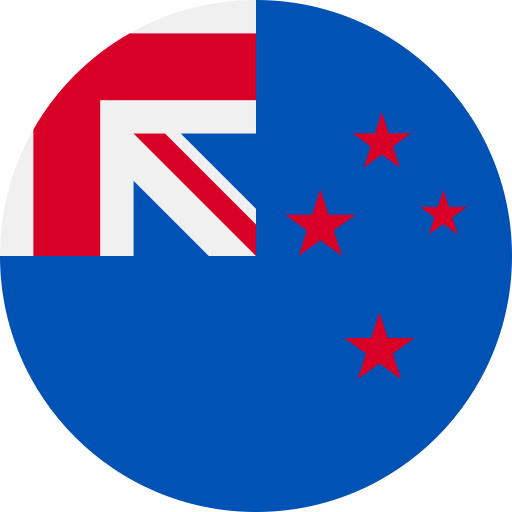Key Takeaways
- NZSL Recognition: New Zealand Sign Language (NZSL) has been an official language since 2006, highlighting its importance to the Deaf community in New Zealand.
- User Demographics: Approximately 20,000 people use NZSL as their primary language, predominantly located in urban areas like Auckland and Wellington.
- Cultural Significance: NZSL embodies the rich culture of the Deaf community, serving as a medium for storytelling, traditions, and social connections.
- Communication Access: Learning basic NZSL can enhance communication between hearing individuals and the Deaf community, promoting inclusivity and understanding.
- Community Support & Education: Increased awareness through education and support from organizations helps normalize the use of NZSL, fostering stronger relationships among diverse groups.
- Comparison with Other Sign Languages: While NZSL shares some similarities with other sign languages like Auslan, it remains unique with distinct grammatical structures and vocabulary.
Ever wondered how many people speak New Zealand Sign Language? It’s a fascinating question that shines a light on the rich culture of the Deaf community in New Zealand. While it might not be as widely known as other languages, this unique form of communication plays a vital role for thousands.
Overview of New Zealand Sign Language
New Zealand Sign Language (NZSL) serves as a vital communication method for the Deaf community in New Zealand. Officially recognized as one of the country’s official languages since 2006, NZSL plays an essential role in everyday interactions, education, and cultural expression.
Approximately 20,000 people use NZSL as their primary language. This number reflects its significance within the Deaf community while also highlighting its importance in fostering inclusivity and accessibility. The language features unique grammatical structures and vocabulary distinct from spoken English, making it rich and expressive.
NZSL incorporates various visual elements such as facial expressions, body language, and spatial awareness. These components enhance meaning and context during conversations. As you explore this vibrant language further, you’ll discover how it enriches relationships among users by promoting understanding and connection.
Understanding NZSL not only benefits direct users but also opens doors for hearing individuals who engage with the Deaf community. Learning basic signs can improve communication experiences and foster stronger connections between different groups.
New Zealand Sign Language stands out as a dynamic form of communication that bridges gaps between diverse communities while empowering those who rely on it daily.
Importance of New Zealand Sign Language
New Zealand Sign Language (NZSL) plays a crucial role in the lives of many individuals within the Deaf community, offering a unique means of communication. Recognized as an official language since 2006, NZSL not only facilitates everyday interactions but also enriches cultural identity and expression.
Cultural Significance
NZSL embodies the rich culture and heritage of the Deaf community in New Zealand. It serves as a vessel for storytelling, traditions, and social connections among users. The language’s visual nature fosters creativity through expressive gestures and facial expressions, allowing stories to come alive in ways that spoken languages cannot capture. As you engage with NZSL, you connect with a vibrant culture that values inclusivity and diversity.
Communication Access
Access to effective communication is vital for fostering understanding between hearing individuals and those who are Deaf or hard of hearing. NZSL provides this access by eliminating barriers that often hinder interaction. By learning basic signs or engaging with fluent users, you enhance your ability to communicate effectively within diverse settings—be it at work, school, or social gatherings. This mutual understanding promotes collaboration and strengthens relationships across communities while ensuring everyone feels valued.
Embracing NZSL not only empowers its users but also cultivates an environment where everyone can participate fully in society’s conversations.
Demographics of New Zealand Sign Language Users
New Zealand Sign Language (NZSL) is an essential part of communication for a significant portion of the population. Understanding its demographics sheds light on its importance in society.
Estimated Number of Users
Approximately 20,000 individuals use NZSL as their primary language. This number reflects those who identify as Deaf or hard of hearing and rely on NZSL for everyday communication. The language’s recognition as an official language since 2006 has encouraged more people to learn it, enhancing accessibility within communities.
Geographic Distribution
NZSL users are primarily concentrated in urban areas, where access to resources and community support is greater. Major cities like Auckland, Wellington, and Christchurch host vibrant Deaf communities that facilitate social interactions and cultural exchange through NZSL. Smaller towns also have users, but the availability of services may vary significantly based on location.
Understanding these demographics highlights how crucial NZSL is for fostering inclusion and ensuring effective communication among diverse populations in New Zealand.
Factors Influencing Usage
Several factors impact the usage of New Zealand Sign Language (NZSL) among its users. Understanding these elements provides insight into how this language thrives within communities.
Education and Awareness
Education plays a crucial role in promoting NZSL. Schools that incorporate NZSL into their curricula increase awareness among students, fostering an environment where communication with Deaf individuals is normalized. Community workshops and online courses also boost understanding, making it easier for hearing people to learn basic signs. The more people who know about NZSL, the more inclusive interactions become, bridging gaps between different communities.
Community Support
Community support significantly influences the use of NZSL. Organizations dedicated to the Deaf community provide resources such as interpreters and mentorship programs that encourage new learners. Regular social events where both hearing and Deaf individuals interact help normalize the use of NZSL in everyday settings. By cultivating relationships through shared experiences, communities reinforce the importance of effective communication, further embedding NZSL in cultural practices.
By recognizing these factors—education and community support—you can appreciate how they contribute to the vitality of New Zealand Sign Language and enhance its role in society.
Comparison to Other Sign Languages
New Zealand Sign Language (NZSL) differs significantly from other sign languages worldwide. While many countries have their own distinct sign languages, NZSL shares some similarities with Australian Sign Language (Auslan) due to historical connections. However, the two languages possess unique features that set them apart.
Approximately 20,000 individuals use NZSL as their primary mode of communication. In contrast, American Sign Language (ASL), one of the most widely recognized sign languages globally, boasts around 500,000 users in the United States and Canada. ASL’s structure and vocabulary differ considerably from NZSL, emphasizing the diversity among sign languages.
UK Sign Language (BSL) also illustrates this diversity. BSL has an estimated 150,000 users in the UK and presents different grammatical structures than both NZSL and ASL. Such variations highlight how cultural contexts shape each language’s development and usage.
The recognition of NZSL as an official language since 2006 underscores its importance in New Zealand’s Deaf community. This status encourages more people to learn it compared to some regions where local sign languages lack formal recognition or support systems.
Understanding these differences promotes greater appreciation for each language’s uniqueness while fostering inclusivity within diverse communities. Engaging with various sign languages enhances cross-cultural communication and strengthens relationships among Deaf individuals across different nations.
Conclusion
Embracing New Zealand Sign Language enriches both the Deaf community and society as a whole. By recognizing its significance you not only support approximately 20,000 users but also foster inclusivity in your community. Learning even basic signs can create meaningful connections and enhance communication with those who use NZSL.
As more people engage with this vibrant language the potential for deeper understanding grows. The unique cultural expressions found within NZSL highlight its importance beyond mere communication. By participating in this journey you contribute to a more inclusive environment where everyone has the opportunity to share their stories and experiences effectively.
Frequently Asked Questions
What is New Zealand Sign Language (NZSL)?
NZSL is a unique form of communication used primarily by the Deaf community in New Zealand. Officially recognized as one of the country’s official languages since 2006, it serves around 20,000 users and incorporates visual elements like facial expressions and body language.
Why is NZSL important for the Deaf community?
NZSL is crucial for everyday interactions, education, and cultural expression among Deaf individuals. It helps preserve their heritage while facilitating effective communication with hearing people, fostering understanding and inclusion within society.
How can I learn NZSL?
You can learn NZSL through various resources such as community workshops, online courses, or local classes. Engaging with fluent users in social events also significantly enhances your learning experience.
Where are most NZSL users located?
Most NZSL users are concentrated in urban areas like Auckland, Wellington, and Christchurch. These locations offer better access to resources and community support for those who use sign language.
How does NZSL compare to other sign languages?
While NZSL shares some similarities with Australian Sign Language due to historical ties, it has unique features that distinguish it from American Sign Language (ASL) and UK Sign Language (BSL). Each sign language reflects its culture’s distinctiveness.
What role does education play in promoting NZSL?
Education plays a vital role by normalizing communication with Deaf individuals. Schools that incorporate NZSL into their curricula help raise awareness while providing students with essential skills for inclusive interactions.
How does NZSL foster creativity within storytelling?
The visual nature of NZSL allows stories to be expressed vividly using gestures, facial expressions, and spatial awareness. This enriches storytelling beyond what spoken languages can achieve, capturing emotions and experiences uniquely.
Why should hearing individuals learn basic signs?
Learning basic signs enhances communication between hearing individuals and those who are Deaf or hard of hearing. It promotes collaboration and strengthens relationships across communities by fostering an inclusive environment for everyone involved.







